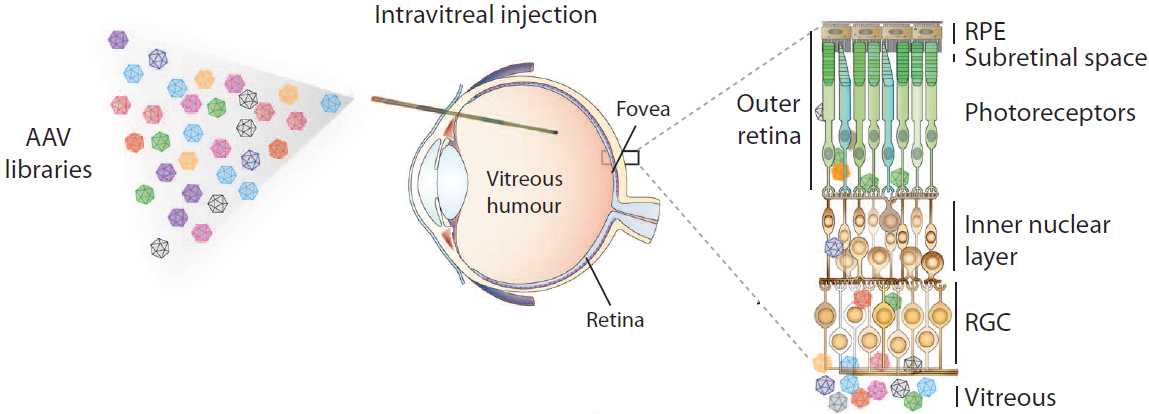A simple, non-invasive gene therapy restores sight
Can now safely insert repair genes into photoreceptors in the fine-vision fovea
June 14, 2013

To evolve a virus best suited for gene therapy, Berkeley researchers created more than 100 million engineered adeno-associated viruses (left) and injected them into the gel-like center of the eye. Those able to penetrate the many cell layers of the retina are used to shuttle a corrective gene into cells containing a defective gene. To reach these cells, in particular the light-sensitive photoreceptors and the retinal pigment epithelium (RPE) cells, the virus must pass through multiple cell layers (right). (Credit: UC Berkeley)
UC Berkeley researchers have developed an new method for inserting genes into retina cells that is easier and more effective, It could greatly expand gene therapy to help restore sight to patients with blinding diseases ranging from inherited defects like retinitis pigmentosa to degenerative illnesses of old age, such as macular degeneration.
Unlike current treatments, the new procedure delivers genes to hard-to-reach cells throughout the entire retina, and is relatively non-invasive, compared to current procedures.
No comments:
Post a Comment